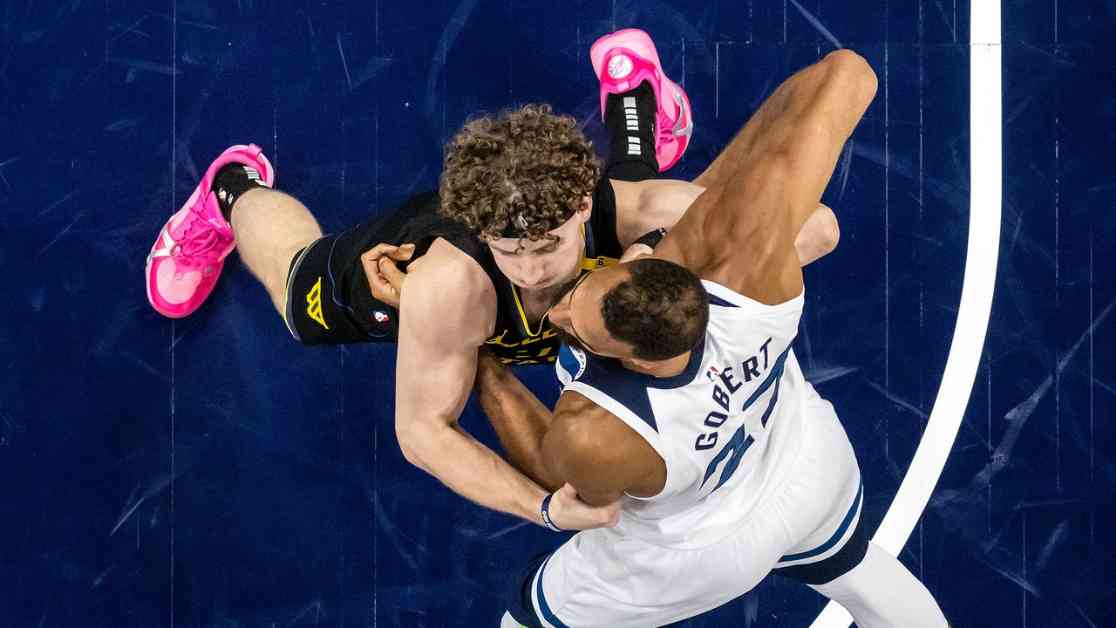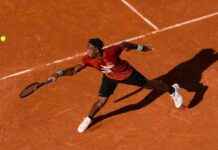The Warriors and Timberwolves Face Off in the Playoffs
On Wednesday, the day after the Golden State Warriors defeated the Minnesota Timberwolves in Game One of their second-round playoff series, Chris Finch, the Timberwolves coach, shared some thoughts with reporters about the Warriors’ style of play during the post-season. The Warriors, he said, “do a lot of fouling, holding, shoving, pushing, and tackling Rudy”—as in Gobert, Minnesota’s center. The Timberwolves were forced to take matters into their own hands, he added. By way of example, he cited a moment when Brandin Podziemski had grabbed and grappled with Gobert, who is seven feet one, under the basket. Gobert had untangled himself from Podziemski, who fell to the floor. Gobert had been called for the foul. After Finch made his comments, a reporter relayed them to Podziemski, and asked for his take. Podziemski listened to the reporter’s account with a cocked head and pursed mouth, his distinctive ringlets flopping over his sweatband, his left eye shadowed by a faint bruise. “I mean, it’s the playoffs,” Podziemski said. The Warriors’ first-round series—a seven-game win over the very physical Houston Rockets—had been a brawl, he went on. The Rockets’ aggression “rubbed off on us,” he said. Also, Gobert is a foot taller than he is, he noted. He shrugged. “What do you want me to do?” The gaggle of reporters laughed.
The Physicality of Playoff Basketball
“Playoff basketball” rarely needs an explanation. Everyone knows what it means: the stakes of the games are higher, and so is the intensity of the action. Referees become less inclined to blow their whistles, and teams take advantage. The games become more physical than they are during the regular season. All of that is familiar by now. Even so, the aggressive play in this post-season has stood out. A number of coaches have commented on it—not only Finch, who also decried the amount of contact that the referees allowed during the Timberwolves’ first-round series, against the Los Angeles Lakers, but also Kenny Atkinson, the coach of the Cleveland Cavaliers; David Adelman, of the Denver Nuggets; and Steve Kerr, who coaches the Warriors. “To me, it’s crazy out there, what’s happening,” Kerr said on Wednesday. “Everybody’s fouling each other.” It seems that way to a lot of people. Last season, the refs seemed to pay renewed attention to the degree that players on offense were veering into contact, attempting to draw fouls; the refs started calling fewer of those fouls, leading to an increase in contact and a drop in scoring. But, this season, the officiating appeared to return to its previous form, and scoring ticked up again—until the post-season, when the refs have, once again, let more contact pass.
The Strategy of Aggressive Play
Or at least that’s the story. It can be hard to interpret the numbers; shooting fouls are down, offensive efficiency has dropped, and some games look more like the bully-ball style of the nineteen-nineties than the free-flowing game that many teams—including, famously, the Golden State Warriors—usually deploy now. Referees are still calling a lot of fouls, but many of them are off the ball. Also, some teams have been intentionally fouling weaker free-throw shooters, or baiting less adept defenders into contact, in an attempt to get them into foul trouble and force them off the court. Not all coaches place the responsibility with the officiating. “I actually think they’re calling more fouls right now than they did in the regular season,” the Oklahoma City Thunder coach Mark Daigneault said. “They’re calling more off-ball fouls, they’re calling less shooting fouls, they’re calling less illegal screens. We’re tracking it closely. I think the games are a little more physical, but there’s probably more actual fouling going on.”












